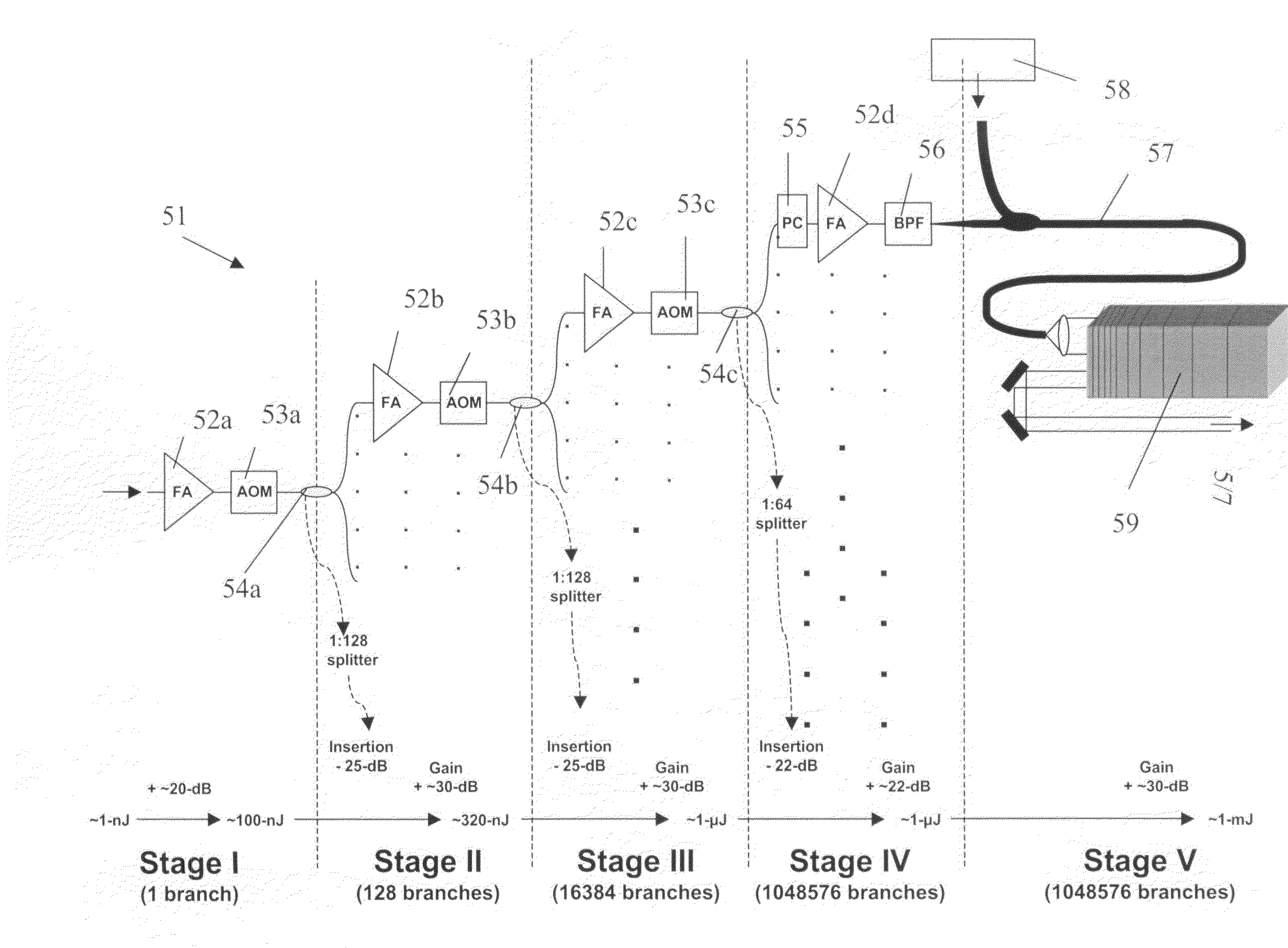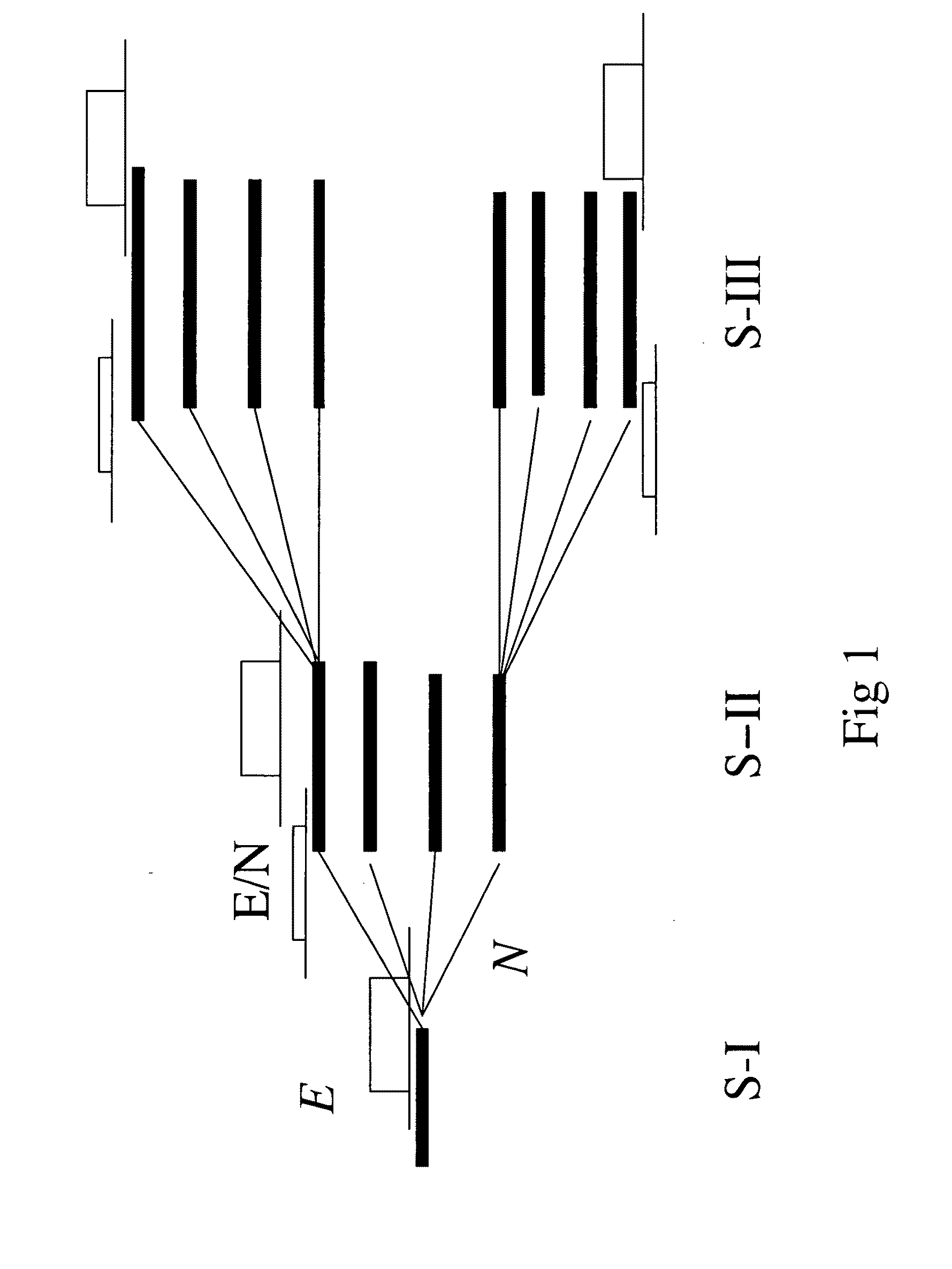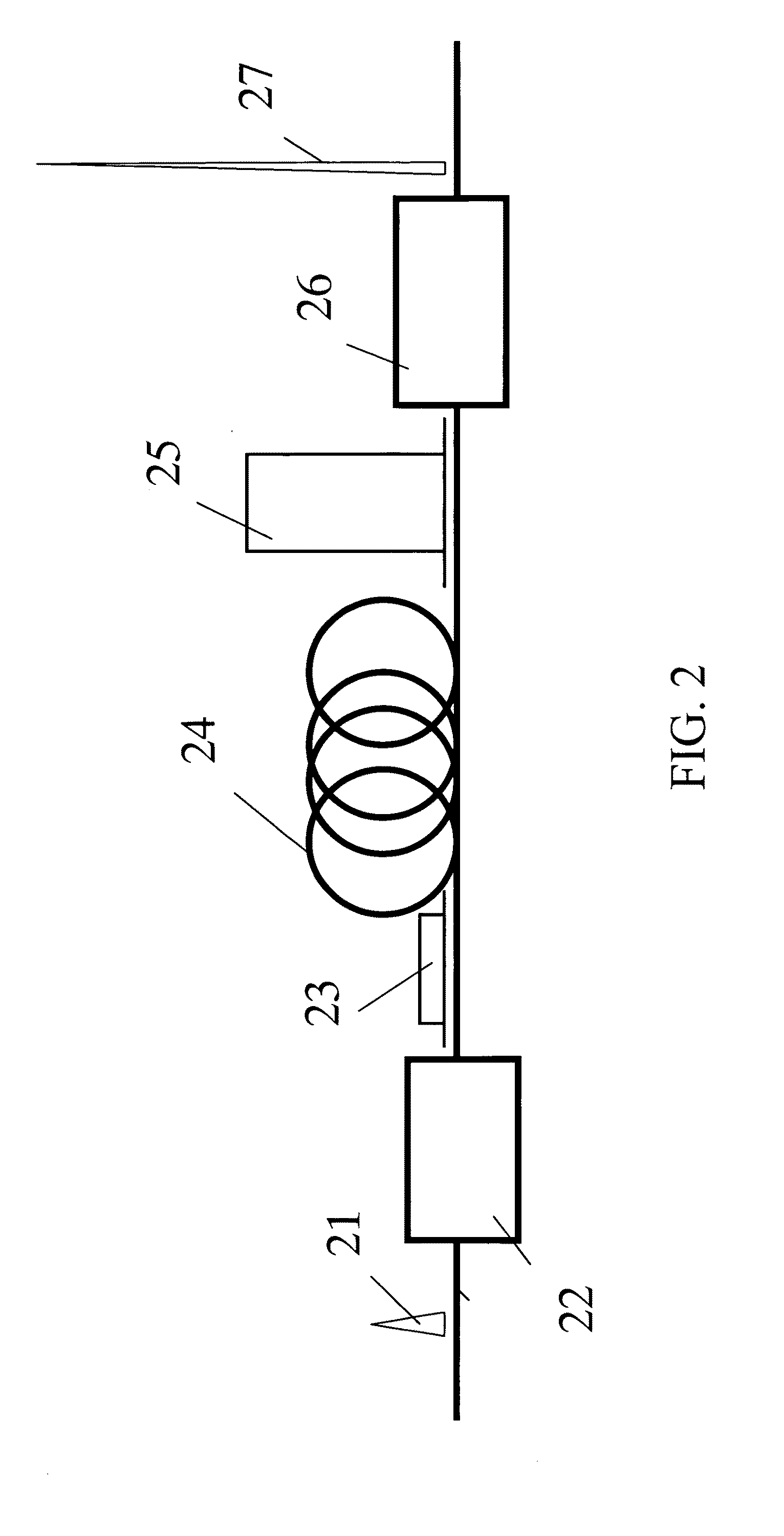Optical Pule Amplifier with High Peak and High Average Power
a technology of optical pulse amplifier and peak power, which is applied in the field of optical pulse amplifier, can solve the problems of difficult to cool the bulk within the cavity, low repetition rate of such optical pulse amplifier, and inability to obtain high peak power, and achieves the effect of high peak power, easy cooling, and high surface/volume ratio of optical fibers
- Summary
- Abstract
- Description
- Claims
- Application Information
AI Technical Summary
Benefits of technology
Problems solved by technology
Method used
Image
Examples
Embodiment Construction
[0027]As schematically illustrated FIG. 1, an amplifier according to the invention comprises identical fiber-CPA sections 12. The last stage of the amplifier comprises Nt identical fibers. The network is composed of n stages SI, SII, SIII. Each stage consists of N fibers. For cost reasons, all these fibers are identical and identically pumped.
[0028]The Chirped Pulse Amplification in such fibers has been described and demonstrated in Advanced Solid State Lasers, 2001, Seattle, Wash., January, Galvanauskas, et al. “Millijoule femtosecond fiber-CPA system”. Illustrated FIG. 2, a pulse 21 is stretched by a stretcher 22 to produce a stretched pulse 23. The stretched pulse 23 is then amplified by a fiber amplifier 24 to produce an amplified stretched pulse 25. The amplified stretched pulse 25 is finally compressed by a compressor 26, to produce a amplified pulse 27.
[0029]In the system illustrated FIG. 1, the initial pulse is first stretched and amplified to a level E=Fs.A where Fs is the ...
PUM
 Login to View More
Login to View More Abstract
Description
Claims
Application Information
 Login to View More
Login to View More - R&D
- Intellectual Property
- Life Sciences
- Materials
- Tech Scout
- Unparalleled Data Quality
- Higher Quality Content
- 60% Fewer Hallucinations
Browse by: Latest US Patents, China's latest patents, Technical Efficacy Thesaurus, Application Domain, Technology Topic, Popular Technical Reports.
© 2025 PatSnap. All rights reserved.Legal|Privacy policy|Modern Slavery Act Transparency Statement|Sitemap|About US| Contact US: help@patsnap.com



